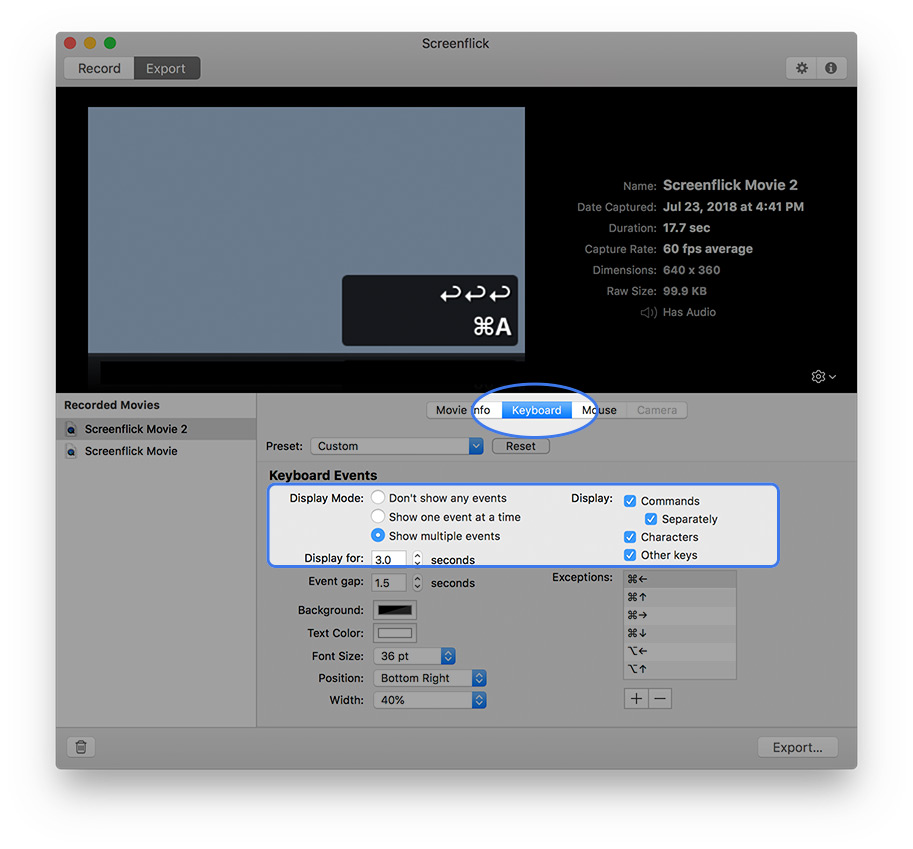

- #Screenflick with external imterface movie#
- #Screenflick with external imterface pro#
- #Screenflick with external imterface mac#
Simply click on the window you want to capture. When you do so, it'll turn the cursor into a camera instead of the crosshairs you'd expect from Cmd-Shift-4. Here is Cmd-Shift-4 and then the space bar of the same window. I'm a stickler for detail and always want really great looking screen shots. Sure, you could crop it down farther, but then you're worried about the rounded corners still having bits of the background. It looks purely "meh" as you've got bits of the background. I hit it the key combo and then dragged a box around it. Here's a Cmd-shift-4 of a Finder window of my home folder. What does that do? Allows you to capture the current window. There's also the less well known Cmd-Shift-4 and then tap the space bar. If you're doing still captures, Cmd-Shift-3 and Cmd-Shift-4 are sufficient.
#Screenflick with external imterface mac#
It is also available on virtually any Mac where you might like to take a screenshot. This is not a full-blown replacement for other things a screen shot (or movie) tool can do, but it quickly takes quality screenshots that can be edited through other means. (Ambrosia used to be across town from me.)
#Screenflick with external imterface pro#
If you have to repurpose your images in other ways, you can have more than one Folder Action folder, one for each process.Īnyway, this is roughly how I replaced Snapz Pro many years ago, and I mentioned it to Andrew when I had lunch with him once. Probably an anachronism in this age of retina graphics. For that, I create a Folder Action with an attached Automator workflow that reduces a copy of the file to 80% of its original size. I also prefer posting/publishing reduced screen shots so that elements in them aren’t mistaken for the real thing. (I’d rather have a smaller shadow but the Python script I used for that relied on the deprecated Core Graphics bindings.) Drop shadows are retained because OS X screenshots look extremely weird to me if they have no depth. The output filename includes the date and a random string so you shouldn’t get conflicts (but the openssl command will occasionally generate strings that are bad for filenames). If you cancel the screenshot, no file is saved. It gives you a delay of 4 seconds to set up your screen shot, and then you get the standard interface for selecting a window as the subject of the screen shot. sleep 4 screencapture -tpng -iwW ~/Pictures/Screencapture-`date +%Y%m%d`-`openssl rand -base64 6`.png
#Screenflick with external imterface movie#
The "QuickTime" and "Flash" tabs in the movie export now use the modern H.264 encoder on OS X Yosemite.Control Screenflick from another Mac or (soon) iOS device. Added remote control capability on OS X Yosemite and later.Screenflick is now 64-bit on OS X Yosemite and later.Fixes a crash on OS X 10.8 when viewing Preferences.

On Retina screens, the play button (and others) in the movie preview area are no longer double-sized or low resolution.Several important improvements for error reporting and stability.Fixes problems caused when exporting a time-lapsed / sped-up recording which could lead to a crash.The Export view now displays recording which are "damaged" and allows user to repair them.All error messages should now have an "Email Support" button.Added the ability to surpress the warning when no audio is set to be recorded along with the video camera.This can also be seen by selecting "Quick Overview" from the Help menu. Added a quick "tour" of Screenflick for first time users, on Yosemite and later.Movie info in the Export view now shows whether the selected recording has audio or not.The shortcut has always worked, but now it's shown. In the Presets popup in the screen selection view (just after starting a recording) "Command-F" is shown as a keyboard shortcut for "Fullscreen".


 0 kommentar(er)
0 kommentar(er)
